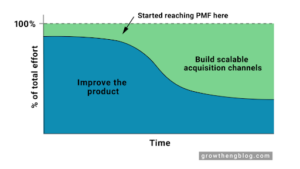Understanding the Equation of Your Business
How Most Businesses Get It Right
Where Businesses Go Wrong
Taking Action Based on the Equation of Your Business
When I worked at Yammer, one of the key dashboards of the business was daily active users. Every weekend, the daily actives would fall off a cliff because Yammer is a tool that people use at work.
You expect traffic to bounce back on Monday, but maybe that Monday is Memorial Day and you don’t see the traffic bounce back. Most people wouldn’t freak out in that situation. They’d say, “I know it’s a holiday.”
Now you’re starting to apply logic to your time series. You’re not just asking if the time series is deviating from normal, but you’re also applying logic to understand why it is. Going back to my Yammer example, you know what’s happening isn’t an issue so there’s no action to take.
The flip of this, and this is important, is you can never prove or disprove the null hypothesis. You can’t prove nothing is wrong, because by that logic you’d have to test every single dimension of what could be wrong.
You have to have a strategic game plan and a set of prior beliefs to walk through in order to effectively debug what’s going on. The most obvious is it may be a data pipeline issue. In fourth grade, I took the classic test where the first instruction was to read through everything and the last instruction was to skip to the last question – instead, I toiled and tried to answer everything. So check upstream dependencies, and then look at your populations and then subpopulations. Maybe you have a theory that the issue is driven by certain customer segments, so look at your data cut by that customer segment. By diving into these things sequentially, you’re able to see the signals your data is giving.
Dashboards are just a starting point for this kind of data work.
Whether you’re a start-up founder or analyst, knowing the equation of your business is critical to steering the company in the right direction and making adjustments as necessary. And this becomes easier when you pair your equation with the tools needed to easily calculate metrics, create a single source of truth for the business, and automate dashboards — the modern data stack.
Learn how a modern data stack helps you understand what’s happening in your business and make the right data-driven decisions.


